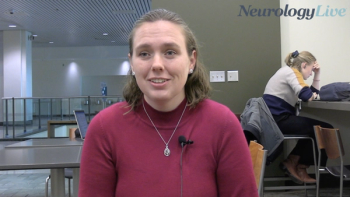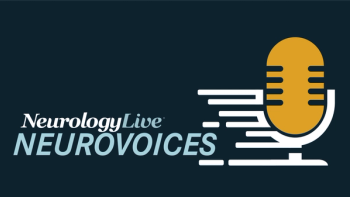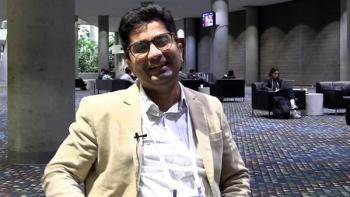
Nexalin Initiates Q-Submission Process for Transcranial Alternating Current Stimulation Device in Alzheimer Studies
Key Takeaways
- Nexalin's Gen-2 SYNC system is a non-invasive neuromodulation device targeting cognitive disorders like Alzheimer's and dementia.
- The device uses a 15 milliamp alternating current waveform to stimulate deep mid-brain structures.
Nexalin plans to submit a Q-Submission to the FDA for its Gen-2 SYNC system, aiming to advance trials for Alzheimer disease, dementia, and mild cognitive impairment following positive internal data and FDA feedback.
Following positive conversations with the FDA, Nexalin plans to submit a Q-Submission to the agency for its Gen-2 SYNC system, a non-invasive neuromodulation device that does not require anesthesia or sedation. Through this, the company will work with the FDA on the next steps to advance this therapeutic in trials of Alzheimer disease (AD), dementia, and mild cognitive impairment.1
This next step follows encouraging internal data and preliminary feedback from the FDA, marking a critical phase in advancing the Gen-2 SYNC system as a potential option for those impacted by cognitive conditions. The system, which has been previously studied in conditions like chronic insomnia, mild traumatic brain injury, major depressive disorder, and post-traumatic stress disorder, utilizes a proprietary 15 milliamp alternating current waveform to stimulate deep mid-brain structures associated with these cognitive and neuropsychiatric disorders.
"We are encouraged by our internal findings and preliminary interactions with the FDA, which support our view that there may be a viable path forward for our Gen-2 SYNC system as a potential treatment for Alzheimer’s, dementia, and MCI," Mark White, chief executive officer at Nexlin, said in a statement.1 "The upcoming Q-Submission represents an important opportunity to align with the FDA on clinical study design and regulatory strategy as we continue to be in a position to provide safe, effective, and non-invasive neuromodulation therapies to patients in need."
For context, Q-Submissions, or Q-Subs, are when a company or organization submits a request to the FDA for feedback on a proposed clinical trial or regulatory pathway. The Q-Sub process includes several types of interactions, most notably: pre-investigational new drug meetings, end of phase 1 meetings, phase 2/3 meetings, and when looking for scientific advice or guidance. In addition, this may ultimately help avoid costly mistakes, streamline development, and ensure that plans align with FDA expectations.
READ MORE:
In
Prior to that study, the device was shown to be effective in treating MDD. Published in Brain, the double-blind, sham-controlled trial enrolled 100 patients who received 20 daily 40-minute sessions of either active or sham stimulation, with the active group receiving 77.5 Hz, 15 mA stimulation targeting one forehead and two mastoid sites.3
Participants were monitored for 4 consecutive weeks, followed by an additional 4-week efficacy and safety assessment without stimulation. Of the 49 patients in the active group and 46 in the sham group who completed the study, 27 (54%) in the active group achieved remission, defined as scores of less than 7 on the 17-item Hamilton Depression Rating Scale (HDRS-17) at week 8, compared to just 9 (18%) in the sham group. The active group showed a significantly higher remission rate with a risk ratio of 1.78 (95% CI, 1.29-2.47), demonstrating the device's effectiveness in treating MDD.
The Gen-2 SYNC device was also assessed in a small-scale, double-blind, randomized trial of 24 veterans with
REFERENCES
1. Nexalin Technology Initiates FDA Q-Submission Process for Gen-2 SYNC Following Encouraging Data and Preliminary FDA Feedback. News release. Nexalin. May 1, 2025. Accessed May 1, 2025. https://www.globenewswire.com/news-release/2025/05/01/3072569/0/en/Nexalin-Technology-Initiates-FDA-Q-Submission-Process-for-Gen-2-SYNC-Following-Encouraging-Data-and-Preliminary-FDA-Feedback.html
2. Nexalin Technology reports results of clinical study supporting the therapeutic benefits of its Gen-2, 15 milliamp neurostimulation device in treating migraine headaches and related symptoms. Nexalin Technology. August 7, 2023. Accessed May 1, 2025. https://www.globenewswire.com/news-release/2023/08/07/2719691/0/en/Nexalin-Technology-Reports-Results-of-Clinical-Study-Supporting-the-Therapeutic-Benefits-of-its-Gen-2-15-Milliamp-Neurostimulation-Device-in-Treating-Migraine-Headaches-and-Related.html
3. Wang H, Wang K, Xue Q, et al. Transcranial alternating current stimulation for treating depression: a randomized controlled trial. Brain. 2022;145(1):83-91. doi:10.1093/brain/awab252
4. Huang M, Angeles-Quinto A, Baker D, et al. MEG source imaging reveals neuronal changes in combat-related mild traumatic brain injury after transcranial electrical stimulation using Nexalin. Accessed May 1, 2025. https://drive.google.com/file/d/1B5rFTU3a23Mo5l7RUg562D4QUevQCmW4/view?pli=1
Newsletter
Keep your finger on the pulse of neurology—subscribe to NeurologyLive for expert interviews, new data, and breakthrough treatment updates.




















